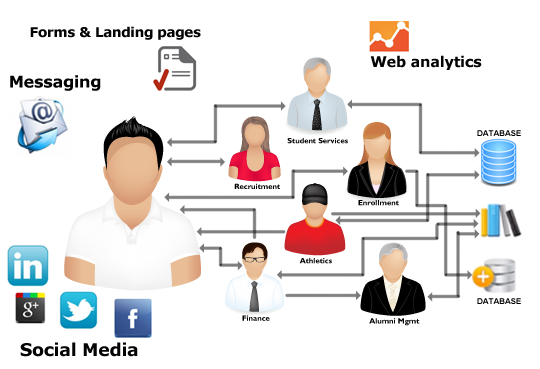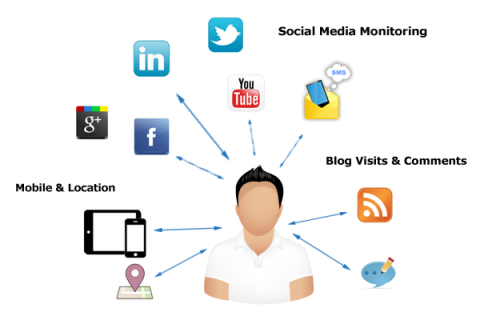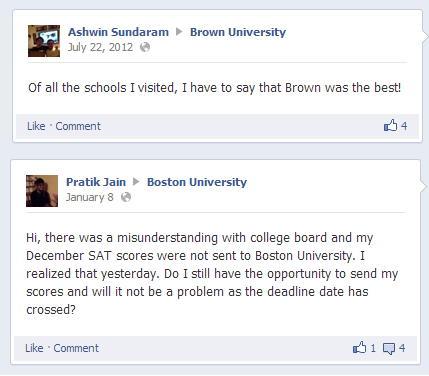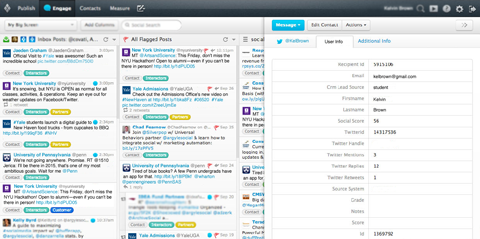As an education marketer, you have more stakeholders with more different needs than any other sector. Prospective students, parents, alumni, faculty and administration pull your messaging in different directions.
How do you serve all masters – especially the millennials who have abandoned most traditional channels of communication? Well, there may be a new set of tools that can help you with that.
Before we explain the solution, let’s first dive into the issues that are facing enrollment marketing.
The Millennial Mindscape
Today’s prospective student is a social creature who equates personalized messages with interest and quality. They’re making a high-cost, high-stakes, once-in-a-lifetime decision. So if you want to raise the quality of your applicants and increase enrollment of the most valuable students, generic messages won’t cut it. You’re going to have to get personal and nurture those leads by adapting your marketing initiatives to their behavior.
To further complicate things, communication channels have changed. Millennials think beyond telephone calls and emails. Phone calls are a high commitment of their time and attention, so a call has a different level of significance for them, and comes much later in the decision making process.
These prized 18-33 year-olds have grown up with Google at their fingertips. Why wait for a brochure to be mailed to you when you can just ask “Siri” if University of Iowa offers a nursing program? Millennials research everywhere. But nothing you can say about yourself will ever mean as much to a Millennial as what other people say about you.
They seek information about you from blogs and sites that offer frank insights and “unvarnished” comparisons, like this site where former students rank professors.
And they may share their own thoughts and experiences on your institutional social media, so be sure your earned audiences are well-tended. As this example shows, not all Facebook comments are superficial. You might think a question as serious as Pratik Jain’s to warrant a phone call, but this Millennial sees Facebook as a perfectly reasonable place to address a private issue.
What This Means for Education Marketing
Does this mean you should forget about updating your website? Not at all. Millennials will go there, but they know you’re on your best behavior and frankly, every educator sounds the same. (“Academic excellence” anyone?) They’ll gloss over the Dean’s statement and watch the video of the current/former students to see what they say and what they’re like. They want to know the school is a good fit, so “Do I look/sound/talk like the people who go here?” is a big part of the equation.
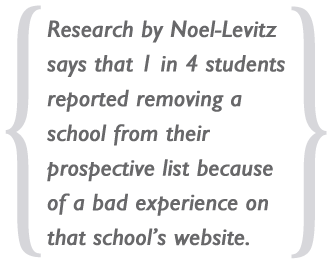 So don’t think you can get off easy with a sub-par site. Ninety-two percent said that they would be disappointed with a school or remove it entirely from their list if they didn’t find the information they needed on the school’s website. How can you tell if your site isn’t up to speed? Look at your competitor’s sites, look at aspirational sites in the category, and take a hard look at your top page views and the user flow through your own site.
So don’t think you can get off easy with a sub-par site. Ninety-two percent said that they would be disappointed with a school or remove it entirely from their list if they didn’t find the information they needed on the school’s website. How can you tell if your site isn’t up to speed? Look at your competitor’s sites, look at aspirational sites in the category, and take a hard look at your top page views and the user flow through your own site.
Also ask yourself: Is my site mobile-optimized? Because 74 percent of prospective students have viewed at least one university website on a mobile device.
What it does mean is that you no longer control the route by which students discover and approach you. “Many prospective students are remaining anonymous until the point of application,” said research from Noel-Levitz, “behaving like ‘secret shoppers’ who research college choices without making advance contact with their considered institutions.”
Prospects may enter the conversion funnel at any given stage. This requires more complex management of the enrollment process and illuminates a need for stronger marketing measurements. The key to successful education marketing today is to break away from the traditional enrollment funnel, maybe even the whole idea of a funnel. Leading everyone through the same progression is easier for you, but it’s not going to yield your strongest results.
How to Increase Enrollment and Communicate with Millennials
Let’s say a high school senior comes for a visit and uploads a photo on Facebook of her experience, and two days later asks a question on your profile about the application requirements. Wouldn’t you rate her as high-interest? How would you communicate with her if you knew she had just been on campus?
What if you could capture these interactions in a meaningful way to enable more consistent, more personalized enrollment nurturing?
Enrollment nurturing platforms bring all the pieces together: a student’s geography, demographics, other information, and their relevant social behavior. They help you capture the unique mix of digital, traditional, and live interactions with each prospect – and respond on an almost-individual basis.
Start by modeling the behavior that leads to enrollment. Take any handful of potential interactions with your school – from a visit to the website to a weekend visit, and you see a progression of activities that indicate increasing levels of interest.
The graph below is an example from Noel-Levitz showing segmentation based on predetermined levels of interest and yield.
“It is imperative to optimize activities so that the most time intensive and effective are used on the students most likely to enroll. This chart shows how to do that by prequalifying leads,..”
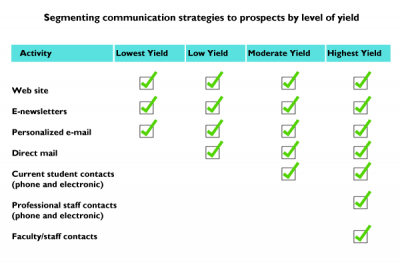
There are progressive levels of sophistication available to you as a marketer.
The essential component is a comprehensive customer relationship (CRM) platform. These systems track and trigger every touch point that your prospect has with your institution, both online and offline. Additionally, information about each prospect is collected, sorted, and stored within the platform to create individual profiles. Thus, giving your marketing team a 360 degree view of all of the interactions any prospective student has had with your school.
An enrollment nurturing platform collects all manner of engagements, links them with your CRM or database, and turns this:
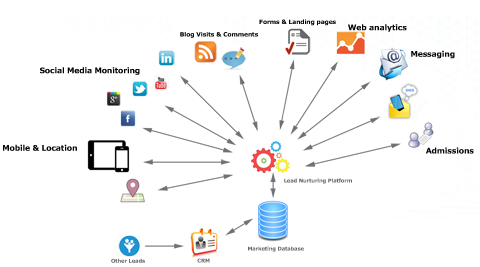
Into this (click image for larger view):
The next level is then to generate automatically customized messages that reflect the individual student’s interests and level of engagement. The CRM system can be tailored to automatically engage with prospective students via prompts that you’ve laid out depending on a prospect’s specific intent and actions. CRM platforms facilitate an unlimited mix of personalization.
Advanced Moves: Social Sign-In
One of the great CRM platform secret weapons is the use of social sign-in (example below) as an alternative to web form completion. Allowing millennial prospects to register for offline events by signing into their social media accounts automatically collects information that leads to an increase in conversions. 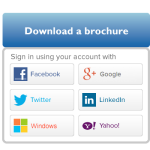
In addition, certain information that the user has placed on their profile can be imported into their CRM profile such as “likes,” interests, activities, and hometown. For example, if your school has a top-notch drama department, you can use the information captured from social sign-in to find prospects who are interested in the arts, theater, or comedy and send them personalized emails with information about the drama department.
The same can be applied to athletics, specific majors, and extracurriculars.
How Education Marketers Will Benefit
Implementing a lead nurturing program for your institution will help you bring the most interested and qualified leads through the enrollment funnel. Personalized platforms allow you to track behaviors across all marketing channels, automate tailored email responses, and integrate social media to measure ROI and engage with prospects. Schools currently using CRM systems report a shorter sales cycle, stronger engagement with students from first contact, attribution tracking for marketing allocation, and increased qualification of students.
Some of the client questions we hear are about the integration of their current system, and about cost. A close evaluation of the options for different systems will show a range integration coptions, but most major database platforms are supported. Other concerns include the customization of the messages. We recommend starting with simpler, broader communications until you are comfortable with the process. As you work with it and begin to see more complex profiles, the messages can be adapted to suit. The key thing, as with so much technology, is to start. Start small, but start.

